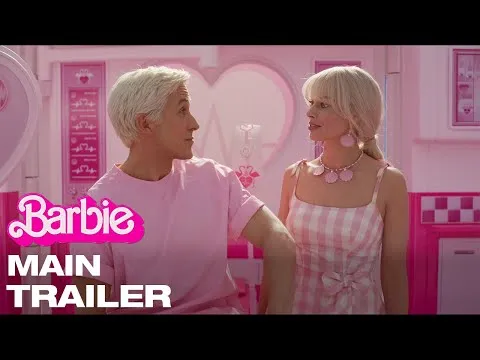I'd like to start by addressing an intriguing phenomenon I've noticed in the reviews that are circulating.In a movie that attempts to critique patriarchy for two hours (pointing fingers at businesses, including Mattel itself, and men in general), almost everyone who has seen it praises Goslin. Naturally, someone might argue that "he played better."
Here's a hot take: Goslin didn't outperform Robbie, but his character was better developed.
This is where the real issues with the film surface. While the film tackles numerous societal issues (corporatism, capitalism, unrealistic female standards, living in a bubble, toxic masculinity, etc.), the meaning lies not so much in what it says, but in what it doesn't say. Deconstructing the film script, we find a significant choice made by the screenwriters, not by chance:
They chose to portray Barbie as a passive character and Ken as an active character.
The active character in a story is the one who drives change, taking matters into their own hands and propelling the plot forward. Typically, protagonists are energetic characters. Conversely, a passive character reacts to events around them, not initiating action.
Barbie is portrayed as passive from the outset. When she encounters a problem (cellulite and thoughts of death), she turns to the "strange" Barbie for advice on the red/blue pill dilemma, choosing inaction. The strange Barbie later manipulates Robbie and sends her on a journey. Meanwhile, Ken independently decides to hide in the car to accompany Barbie.
In the real world, Barbie meets the young girl she's meant to help, but the girl rejects her, leaving Barbie in tears until Mattel intervenes. Ken, on the other hand, sees potential in the patriarchal system and returns to Barbie's world to implement change and assume power.
This pattern continues throughout the film, with Barbie remaining passive at key points, except when she decides not to enter the box at Mattel headquarters. Ultimately, the creator of Barbie takes her hand and leads her to a place where she is transformed into a human.
One could interpret this choice as meta-criticism, suggesting that the stereotypical Barbie, initially advertised as an inspiration for powerful women, embodies passivity. However, the film doesn't fully embrace this narrative, as it aims to promote Barbie rather than deconstruct her entirely.
Ken is presented as a character with deeper issues, offering viewers, regardless of gender, a relatable character. He harbors unrequited love for Barbie and faces constant bullying in her world. His quest to shift the balance of power stems from his chronic underestimation. In the end, he realizes his mistake and embarks on a journey of self-discovery, making his character more relatable.
A second option could have been to depict Ken as entirely evil, embodying toxic masculinity, but the film refrains from this portrayal. Even the CEO of Mattel, who could have been a compelling choice to challenge patriarchal capitalism, ultimately settles for Barbie when advised that a "normal" Barbie can sell.
In an attempt to strike a balance for Mattel's post-commercial agenda, the film unintentionally leads viewers to admire a male role model, despite its feminist rhetoric. This outcome might please the actual male CEO of Mattel immensely.

